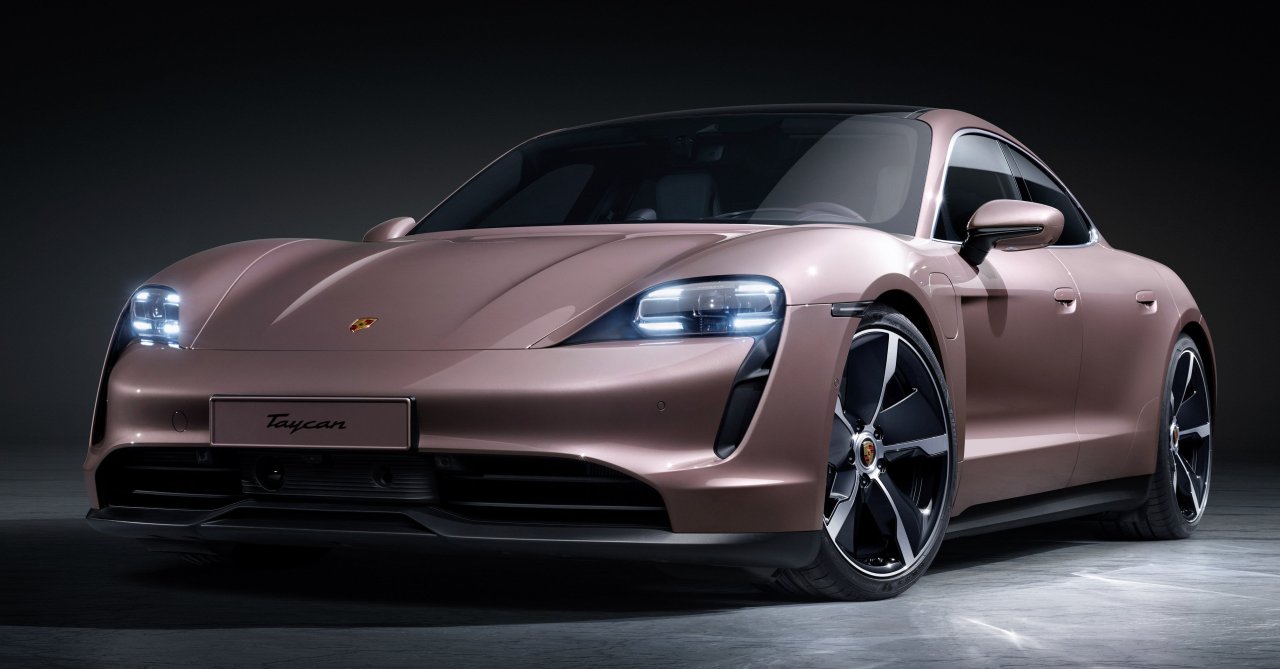[Battery+] 'Peanut butter-jelly' tech lets EVs charge in 20 minutes
LG Energy Solution finds a way with 'peanut butter-jelly' tech
By Kim Byung-wookPublished : Jan. 16, 2022 - 13:33

Porsche Taycan 2019 models surprised the world when they were first released by supporting rapid charging from 0 to 100 percent in 20-30 minutes, which was almost twice as fast as other electric vehicles at the time.
Behind this jaw-dropping performance stood LG Energy Solution’s two breakthrough EV battery manufacturing technologies, which are similar to making peanut butter and jelly sandwiches.
Now the South Korean battery giant aims to apply the two technologies not only to premium models but also to low-and-mid-range ones in order to address the insufficient charging infrastructure, one of the main obstacles blocking drivers from switching to EVs.
The first technology is called double layer coating. Inside EV batteries, plus and minus sides are stacked in layers, just like slices of bread are stacked to make PB&J sandwiches.
A slurry of graphite and silicon is spread and coated on the minus side, just like a mixture of peanut butter and jelly is spread on a slice of bread.
Instead, LG Energy Solution pastes two types of slurries separately, just like pasting peanut butter on the bottom slice of bread and jelly on the top slice of bread.
“The double layer coating technology can paste two types of materials selectively, separately and simultaneously. This optimizes battery functions and reduces resistance inside batteries, which results in faster charging time. After applying this technology for the first time in the world in 2018, LG Energy Solution now uses it for most of its EV batteries,” a company official said.
Also, it was LG Energy Solution that introduced the PB&J recipe for EV batteries. In 2019, the firm was the first in the industry to add silicon to minus sides, which had been previously made of graphite only.
Graphite is the black carbon material that goes inside pencils. Inside minus sides, graphite brings stability to batteries. However, graphite has high resistance, which slows down charging.
By adding a small amount of silicon to graphite inside minus sides, LG Energy Solution enhanced conductivity dramatically. Also, mixing silicon with graphite made batteries more powerful, as one silicon particle can absorb four lithium ions whereas six particles of graphite can accommodate just one lithium ion.
“When silicon is added, more lithium ions come in, so batteries can suffer swelling. LG Energy Solution solved this issue by adding conductive agents called carbon nanotubes,” the company official said.
Following LG Energy Solution’s lead, Samsung SDI and SK On are reportedly using the two PB&J technologies for their EV batteries.

Behind this jaw-dropping performance stood LG Energy Solution’s two breakthrough EV battery manufacturing technologies, which are similar to making peanut butter and jelly sandwiches.
Now the South Korean battery giant aims to apply the two technologies not only to premium models but also to low-and-mid-range ones in order to address the insufficient charging infrastructure, one of the main obstacles blocking drivers from switching to EVs.
The first technology is called double layer coating. Inside EV batteries, plus and minus sides are stacked in layers, just like slices of bread are stacked to make PB&J sandwiches.
A slurry of graphite and silicon is spread and coated on the minus side, just like a mixture of peanut butter and jelly is spread on a slice of bread.
Instead, LG Energy Solution pastes two types of slurries separately, just like pasting peanut butter on the bottom slice of bread and jelly on the top slice of bread.
“The double layer coating technology can paste two types of materials selectively, separately and simultaneously. This optimizes battery functions and reduces resistance inside batteries, which results in faster charging time. After applying this technology for the first time in the world in 2018, LG Energy Solution now uses it for most of its EV batteries,” a company official said.
Also, it was LG Energy Solution that introduced the PB&J recipe for EV batteries. In 2019, the firm was the first in the industry to add silicon to minus sides, which had been previously made of graphite only.
Graphite is the black carbon material that goes inside pencils. Inside minus sides, graphite brings stability to batteries. However, graphite has high resistance, which slows down charging.
By adding a small amount of silicon to graphite inside minus sides, LG Energy Solution enhanced conductivity dramatically. Also, mixing silicon with graphite made batteries more powerful, as one silicon particle can absorb four lithium ions whereas six particles of graphite can accommodate just one lithium ion.
“When silicon is added, more lithium ions come in, so batteries can suffer swelling. LG Energy Solution solved this issue by adding conductive agents called carbon nanotubes,” the company official said.
Following LG Energy Solution’s lead, Samsung SDI and SK On are reportedly using the two PB&J technologies for their EV batteries.












![[Today’s K-pop] BTS pop-up event to come to Seoul](http://res.heraldm.com/phpwas/restmb_idxmake.php?idx=644&simg=/content/image/2024/04/17/20240417050734_0.jpg&u=)




![[KH Explains] Hyundai's full hybrid edge to pay off amid slow transition to pure EVs](http://res.heraldm.com/phpwas/restmb_idxmake.php?idx=652&simg=/content/image/2024/04/18/20240418050645_0.jpg&u=20240419100350)

![[Today’s K-pop] Zico drops snippet of collaboration with Jennie](http://res.heraldm.com/phpwas/restmb_idxmake.php?idx=642&simg=/content/image/2024/04/18/20240418050702_0.jpg&u=)